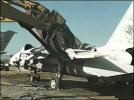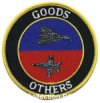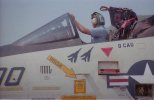Is that not normally done?
CO and XO are not supposed to fly together in case the plane goes down. Don’t want to lose them both, but CAG can grant permission in special cases like an airborne Change of Command or this Protoex. Not a big deal. Some ORM forms to go on leave are more onerous than asking permission for a flight together. @Brett327 Did you have to abide with a similar policy??






